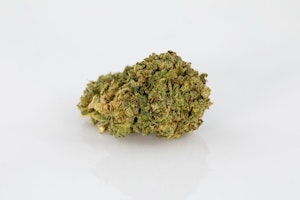
What Is Scromiting And Cannabinoid Hyperemesis Syndrome?
As we navigate through the diverse and ever-evolving landscape of cannabis, it’s crucial to remain open to learning about all aspects of this complex plant – the good, the uplifting, and even the uncomfortable.
As more individuals are embracing the benefits of the unique plant, there’s some light to shed on a condition that can accompany frequent use: Cannabinoid Hyperemesis Syndrome (CHS), known in its most extreme form as scromiting. While the word might sound like the name of a progressive rock band, it’s far from being a groovy scene.
Our aim isn’t to rain on the green parade – instead, we aim to guide you safely through the journey of cannabis consumption. So, let’s take a journey into the heart of this lesser-known condition because knowledge, after all, is the most powerful tool we can arm ourselves with.
What Is Cannabinoid Hyperemesis Syndrome (CHS)?
CHS is a perplexing condition seen in chronic, frequent cannabis consumers. Yes, our beloved plant that brings relaxation, relief, and recreation can, unfortunately, be the culprit of this syndrome if overused.
Characterized by severe waves of nausea, vomiting, and abdominal pain, CHS is described as cyclical, with sufferers often experiencing symptom-free periods followed by intense episodes that can lead to severe dehydration. In extreme cases, kidney failure can result.
Now, before you decide to bid farewell to your beloved herb, it’s important to note that CHS is predominantly associated with heavy, long-term cannabis use. That means that this condition is primarily a concern for those who are lighting up multiple times a day, every day, over an extended period.
The medical community is still unraveling the specifics of why and how this occurs. One element is clear: as cannabis grows in popularity, understanding and recognizing CHS will become increasingly important. So, whether you’re the occasional toker, a medicinal user, or a hardcore connoisseur, awareness of the condition is essential for staying safe while enjoying the many benefits of the remarkable plant.
What Is Scromiting?

Let’s plunge into a term that is as every bit unsettling as it sounds: ‘Scromiting’. Often occurring as severe, cyclical bouts of simultaneous screaming and vomiting, scromiting is an extreme symptom that has been associated with severe cases of CHS.
Scromiting represents episodes of intense, uncontrollable vomiting, accompanied by distressing screams due to extreme discomfort and pain. It’s a far cry from the laid-back, blissful vibe we typically associate with our favorite herb.
Far from just being a rough ride, scromiting can escalate into a serious health concern. The relentless, cyclical episodes of vomiting can lead to severe dehydration, electrolyte imbalance, and, in extreme cases, kidney damage.
While these episodes are alarming, it’s important to note that not every cannabis user will experience scromiting or CHS. These conditions are usually prevalent amongst the long-term, heavy users and even then, it is not guaranteed.
Symptoms Of CHS?
Knowing the symptoms of CHS can make all the difference in recognizing the condition early, seeking the right treatment, and mitigating the worst effects. CHS tends to develop in stages, with symptoms gradually intensifying over time.
Early Phase
The early phase, or prodromal phase, CHS symptoms can be subtle and mimic other ailments. This phase can last months to years, creating a deceptive sense of normalcy before escalating into severe symptoms.
- Nausea that comes and goes – Unexpected waves of queasiness that cause minor disruptions throughout the day.
- Stomach pain – A persistent discomfort or dull ache in the abdomen, similar to mild indigestion.
- Occasional episodes of vomiting – Isolated events that might be enough to ruin the meal or afternoon but generally not persistent enough to be disruptive.
Hyperemesis Phase
The hyperemesis phase is where CHS begins to show its harsher side. The symptoms become increasingly severe and relentless, often prompting individuals to seek medical treatment.
- Severe, constant nausea – Constant and aggressive nausea that makes it difficult to eat or drink and focus on daily tasks
- Back-to-back episodes of vomiting that won’t stop – Vomiting escalates significantly, becoming nearly relentless, leading to physical and emotional distress.
- Stomach pain that can be constant – Abdominal discomfort intensifies and becomes a persistent, gnawing pain.
- Unusual symptoms, like scromiting – An alarming sign that CHS has escalated to a dangerous level, and immediate medical attention is necessary.
Aftermath Phase
The aftermath phase sees the body attempting to recover from the physical toll taken by the CHS episode.
- Dehydration – The most common aftermath symptom. The body struggles to retain fluids due to constant vomiting. Persistent thirst, dry lips, and mouth, and fatigue are common.
- Electrolyte imbalances – Vital electrolytes are lost during the hyperemesis stage which can lead to muscle weakness, irregular heartbeat, blood pressure changes, and spasms.
- Rapid heart rate – A response to dehydration-induced stress, as the body tries to compensate for low fluid volume.
- Low blood pressure – With the fluid levels of the body critically low, blood pressure can drop, leading to symptoms like dizziness, lightheadedness, and in severe cases, fainting.
What Causes Scromiting?

What leads to the disturbing experience of scromiting? The prime suspect is high levels of tetrahydrocannabinol (THC), the compound in cannabis that can cause overstimulation of the nervous system when consumed in large amounts over long periods of time.
Our bodies naturally produce endocannabinoids, which interact with the same receptors in our brains as THC. Many functions in the body are regulated by the interaction of this endocannabinoid system, including mood, appetite, and nausea.
When used in moderation, THC can be used for a multitude of therapeutic purposes – to help induce relaxation and appetite, as well as reduce pain, to name a few. However, frequent consumption of high THC levels can upset this delicate system. This can become a classic case of ‘too much of a good thing,’ resulting in excessive stimulation of the nervous system and thus the dreaded symptoms of CHS.
Severe cases of CHS can lead to scromiting. However, why do only some heavy users experience these conditions? Current theories suggest that genetic variations might make some individuals more susceptible. Consumption methods and cannabis potency may also influence this.
Simply put, scromiting is a cry for help from an overburdened nervous system struggling to handle THC overload. It’s a critical sign that the body’s balance is heavily disrupted and immediate interventions are required.
How Common Is Scromiting?
As cannabis legalization spreads, more CHS and scromiting cases are being reported. But how widespread is this unsettling condition?
While large-scale studies are still required to determine the prevalence of CHS, current evidence suggests that it is becoming more common among heavy cannabis users. A 2018 study suggested that around 2.75 million Americans could potentially suffer from CHS-like symptoms annually1.
The relationship between cannabis use and CHS is an active area of research. As cannabis use continues to rise, we can expect CHS and scromiting cases to potentially follow suit, highlighting the need for raising awareness about these conditions and their link to prolonged, heavy cannabis use.
Treatments For Scromiting
Experienced CHS or scromiting? It is critical to seek medical advice for personalized treatment. Here are some common methods to use for temporary symptom relief:
Heat packs and/or hot showers – Heat packs applied directly to the abdomen can help reduce discomfort.
Capsaicin cream – This chili pepper-derived cream can provide short-term relief, reducing pain and nausea. Works similar to heat therapy.
Antinausea medications – Also known as antiemetics, these medications can help manage nausea and vomiting by blocking the brain’s vomiting signals.
IV fluids – With cases of severe vomiting, IV fluids can replenish hydration and ward off dehydration-related complications.
Electrolyte drinks – Consuming drinks with electrolytes can help restore balance, crucial for managing CHS.
As we wrap up, let’s take a moment to remember that not every flower is without its thorns – yes, cannabis can be a rich source of creativity, pain relief, and relaxation, but heavy use can trigger conditions like CHS. Staying informed, recognizing symptoms, and seeking professional help when needed can turn your cannabis journey from a wild ride into a smooth cruise.
Herb Recommended Products:
READ MORE










